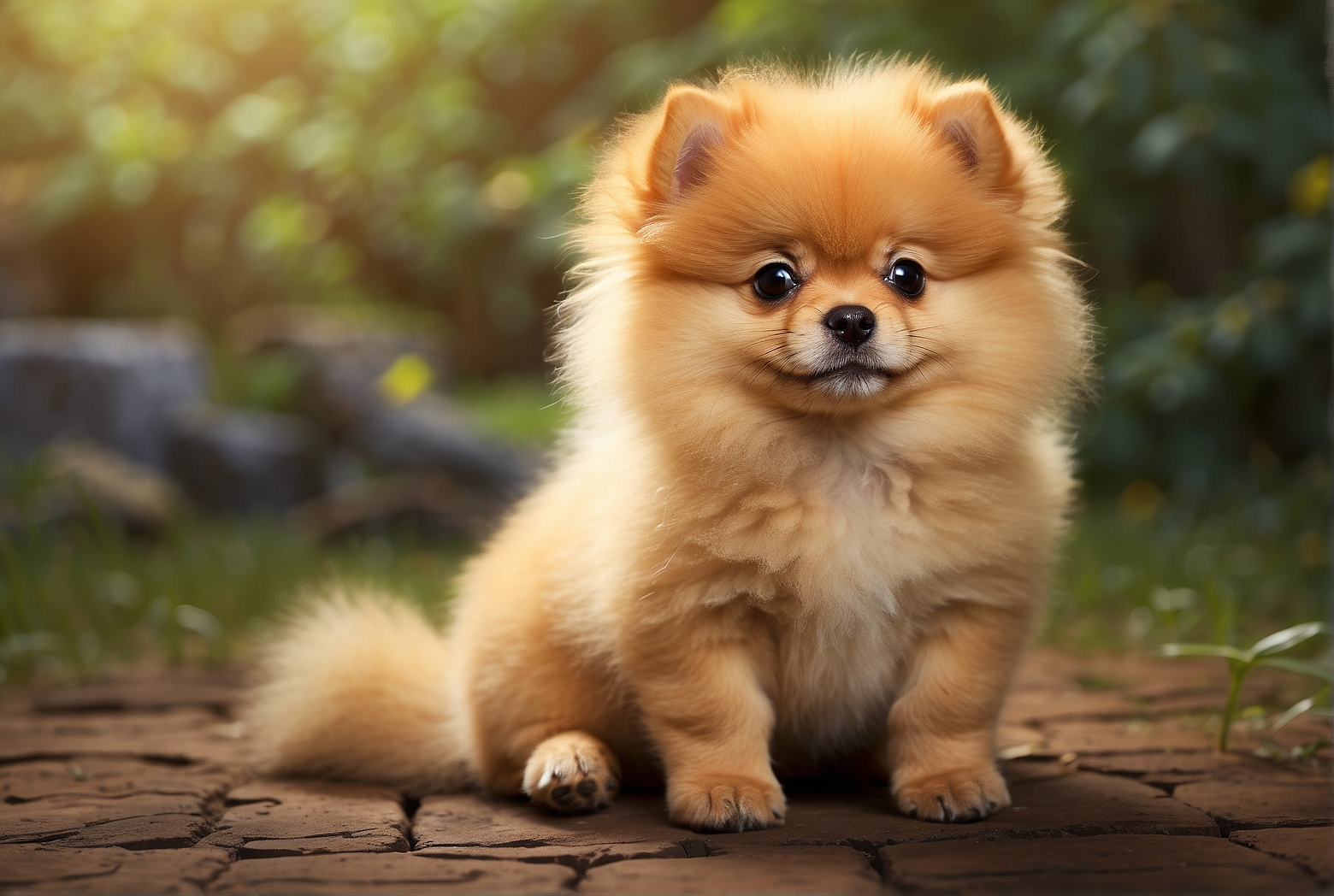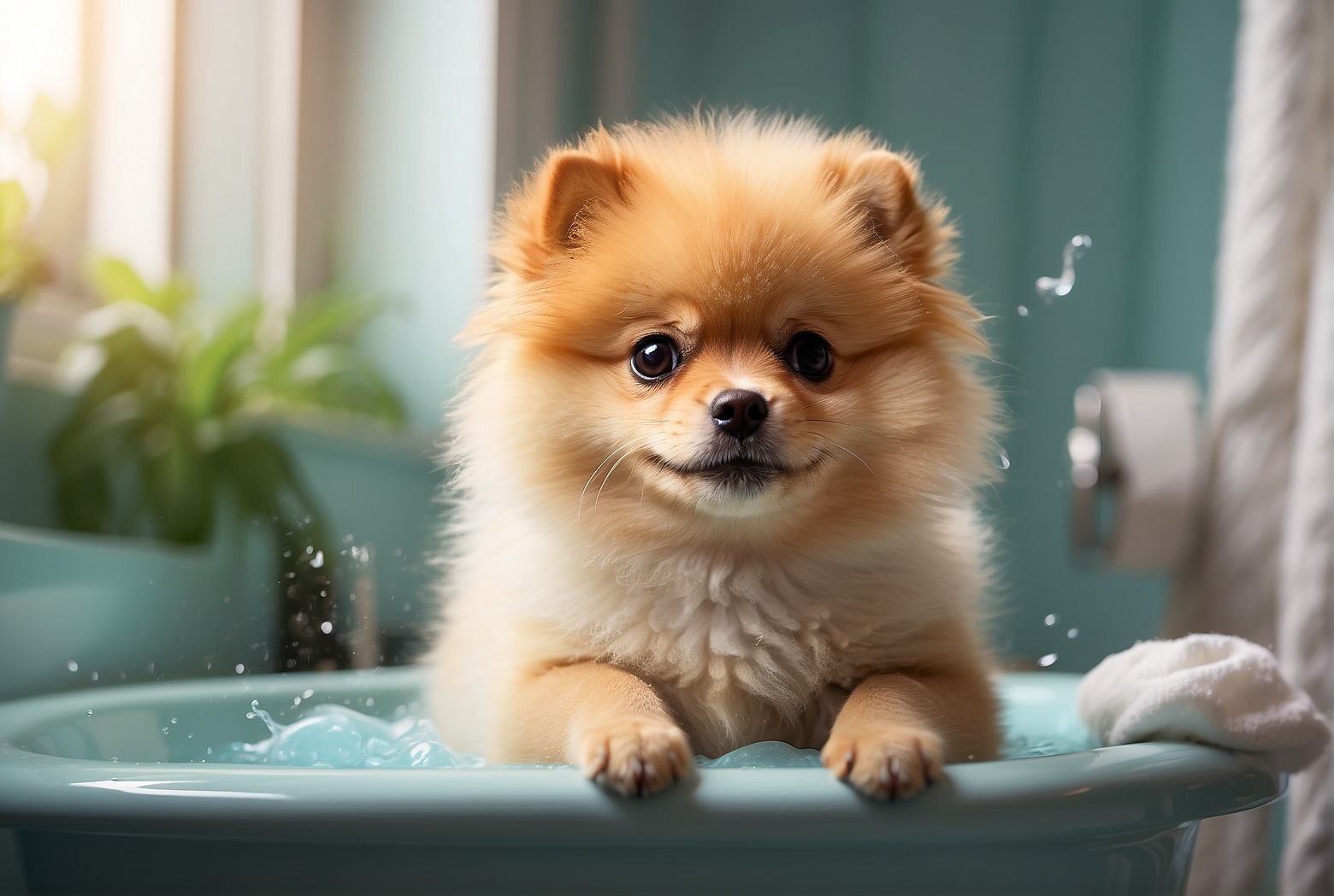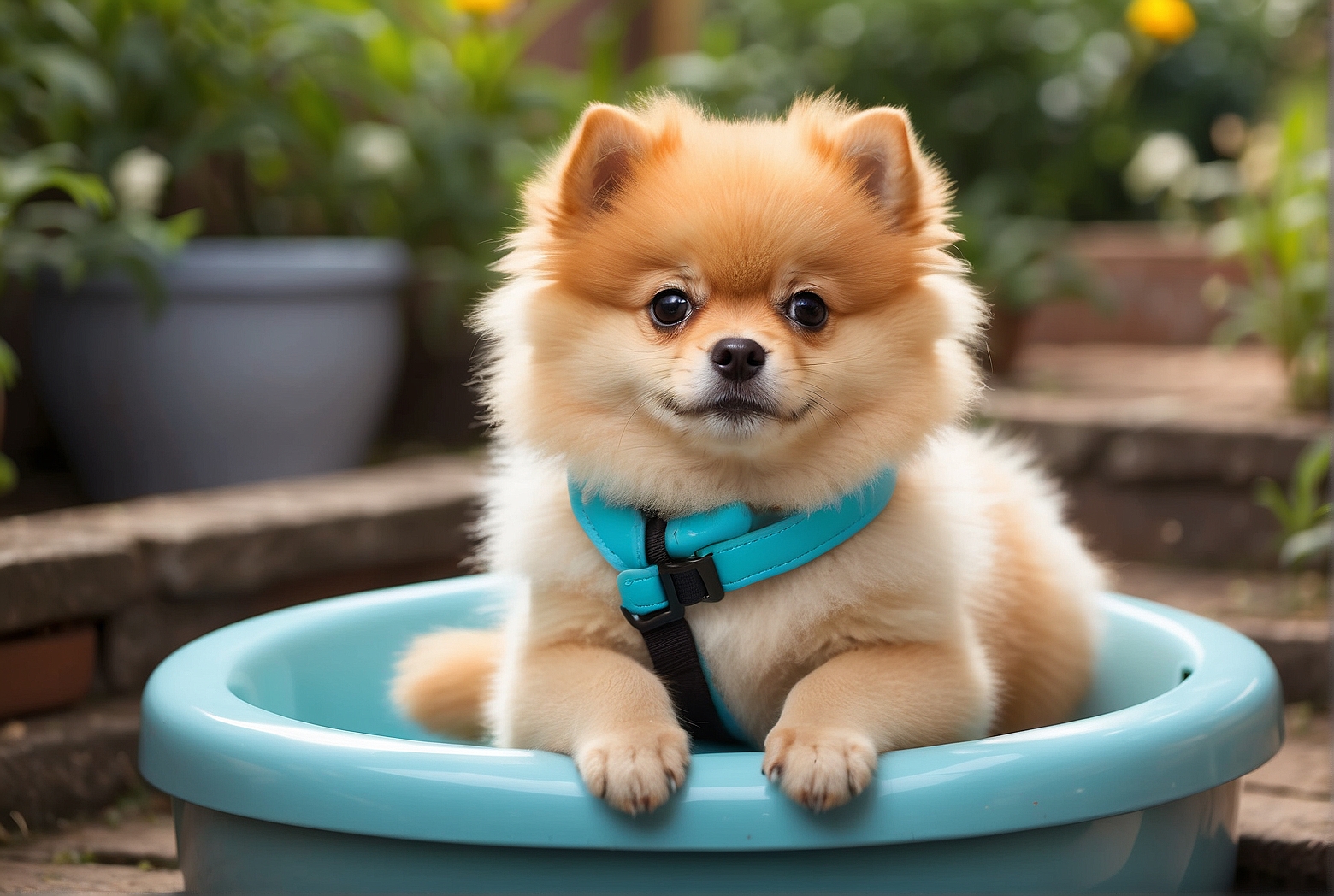So you’ve brought home a fluffy and adorable Pomeranian puppy, and now it’s time for the next step: toilet training. Don’t worry, we’ve got you covered with the ultimate guide to successfully teaching your little furball where to do their business. From establishing a routine to using positive reinforcement, this article will provide you with valuable tips and tricks to make the process as smooth and stress-free as possible. Say goodbye to those pesky accidents and hello to a well-trained Pomeranian puppy in no time!
Understanding Pomeranians
Pomeranians are small, fluffy, and lovable companions that make excellent pets for individuals and families alike. Understanding the characteristics and physiological factors of Pomeranians is essential when it comes to effectively toilet training these adorable pups. By taking the time to prepare for toilet training, establishing a routine, using positive reinforcement, and recognizing signs and cues, you can successfully teach your Pomeranian to become a well-trained and housebroken member of your family.
Characteristics of Pomeranians
Pomeranians are known for their playful and spirited nature despite their small size. They are intelligent and have a strong desire to please their owners. Pomeranians are also highly adaptable and can be trained to follow commands and learn proper toilet etiquette. However, it is important to note that each Pomeranian may have their own unique personality and may require different toilet training techniques.
Physiological Factors to Consider
When it comes to toilet training, understanding the physiological factors of Pomeranians is crucial. Puppies have smaller bladders and shorter attention spans, which means they will need more frequent potty breaks compared to adult Pomeranians. It’s important to keep this in mind and adjust your training approach accordingly. Additionally, Pomeranians have a thick double coat that requires regular grooming and may impact their comfort levels during toilet training. Be mindful of their grooming needs and make the necessary adjustments to ensure their comfort and success.
Preparing for Toilet Training
Before you begin toilet training your Pomeranian, it’s important to create a safe space for them and gather the necessary supplies. Creating a safe space involves designating a specific area in your home where your Pomeranian can stay when supervised and confined during the initial stages of training. This area should be secure, comfortable, and easily accessible for your pup. Additionally, gathering necessary supplies such as a crate or playpen, puppy pads or outdoor potty area materials, treats, and cleaning supplies will help you stay organized and prepared throughout the training process.
Establishing a Routine
Consistency is key when it comes to toilet training your Pomeranian. Establishing a routine that includes regular mealtime schedules and potty breaks will help your pup understand what is expected of them. Setting specific mealtime schedules and feeding your Pomeranian at the same times each day will regulate their digestive system, making it easier to predict when they will need to relieve themselves. Additionally, taking your Pomeranian outside or directing them to their designated potty area at regular intervals will reinforce their understanding of where and when to eliminate waste.

Crate Training
Crate training is an excellent tool for toilet training your Pomeranian. It not only provides a safe and secure space for your pup when you are unable to supervise them but also helps instill good potty habits. When choosing the right crate, opt for one that allows your Pomeranian enough space to stand, turn around, and lie down comfortably. Introducing the crate gradually by making it a positive and inviting space will help your Pomeranian view it as their own den. Place treats and toys inside the crate and encourage your pup to enter voluntarily. Gradually increase the amount of time your Pomeranian spends in the crate, always ensuring they have regular potty breaks.
Positive Reinforcement
Positive reinforcement is a powerful tool when it comes to toilet training your Pomeranian. Using rewards and treats will motivate your pup to repeat desired behaviors and reinforce the connection between proper elimination and positive experiences. When your Pomeranian eliminates waste in the appropriate location, immediately praise them and offer a small treat as a reward. This positive reinforcement will strengthen the association between potty time and positive outcomes, making it more likely that your Pomeranian will continue to exhibit good toilet habits. Practicing consistency in your training approach will also help your Pomeranian understand the expectations and reinforce positive behaviors.
Teaching Basic Commands
In addition to toilet training, teaching your Pomeranian basic commands is essential for their overall obedience and well-being. Basic commands such as “sit,” “stay,” and “come” can be taught alongside toilet training to establish a well-rounded training foundation. The importance of basic commands lies in the fact that they establish clear communication between you and your Pomeranian. Step-by-step training techniques, such as using treats and praise, will help your pup understand and quickly learn these commands. Be patient, consistent, and always reward your Pomeranian for their efforts to encourage continued progress.
Recognizing Signs and Cues
Understanding canine body language and identifying indicators for potty time are vital when it comes to successful toilet training. Pomeranians, like all dogs, display certain behaviors and cues right before they need to eliminate waste. Observing your Pomeranian for signs such as restlessness, circling, sniffing the ground, or pacing will help you anticipate when they need to go potty. By recognizing these signs and cues, you can proactively guide your Pomeranian to the appropriate location and reward them for their successful elimination, further reinforcing their understanding of proper toilet etiquette.
Reacting to Accidents
Accidents happen, especially during the early stages of toilet training. Remaining calm and patient when accidents occur is crucial. Never punish or scold your Pomeranian for accidents, as this can create fear and hinder the training process. Instead, clean up accidents promptly using appropriate pet-safe cleaning products to remove any odors that may attract your Pomeranian to that spot again. Reacting calmly and redirecting your pup to the designated potty area will reinforce the desired behavior and positively contribute to their learning journey.
Progress Monitoring and Adjustments
Toilet training is a process that requires monitoring and adjustments along the way. Tracking your Pomeranian’s successes and challenges will help you evaluate their progress and identify areas that may require additional attention. Keeping a record of their successful eliminations, as well as any accidents or near misses, will help you identify patterns and make necessary changes to your training approach. Consistency is key, but adapting your methods to better suit your Pomeranian’s needs will ultimately lead to a successful outcome.

Gradual Transition to Outdoor Toileting
As your Pomeranian progresses in their toilet training, you can gradually transition from indoor to outdoor toileting. Shifting from the use of puppy pads or indoor potty areas to regular outdoor bathroom breaks will help your pup associate the outdoors as the appropriate place for eliminating waste. Start by reducing the number of indoor options available, gradually phasing them out as your Pomeranian becomes more comfortable and reliable in their outdoor toileting habits. Be patient during this transition and continue to provide positive reinforcement to ensure a smooth and successful change.
Toilet training a Pomeranian puppy may require time, patience, and consistency, but with a solid understanding of their characteristics, physiological factors, and proper training techniques, you can successfully teach your Pomeranian to become a well-behaved and house-trained companion. By preparing for training, establishing a routine, using positive reinforcement, and recognizing your Pomeranian’s cues, accidents will become less frequent, and your relationship with your furry friend will only grow stronger. Embrace the process, enjoy the journey, and celebrate your Pomeranian’s progress every step of the way.
